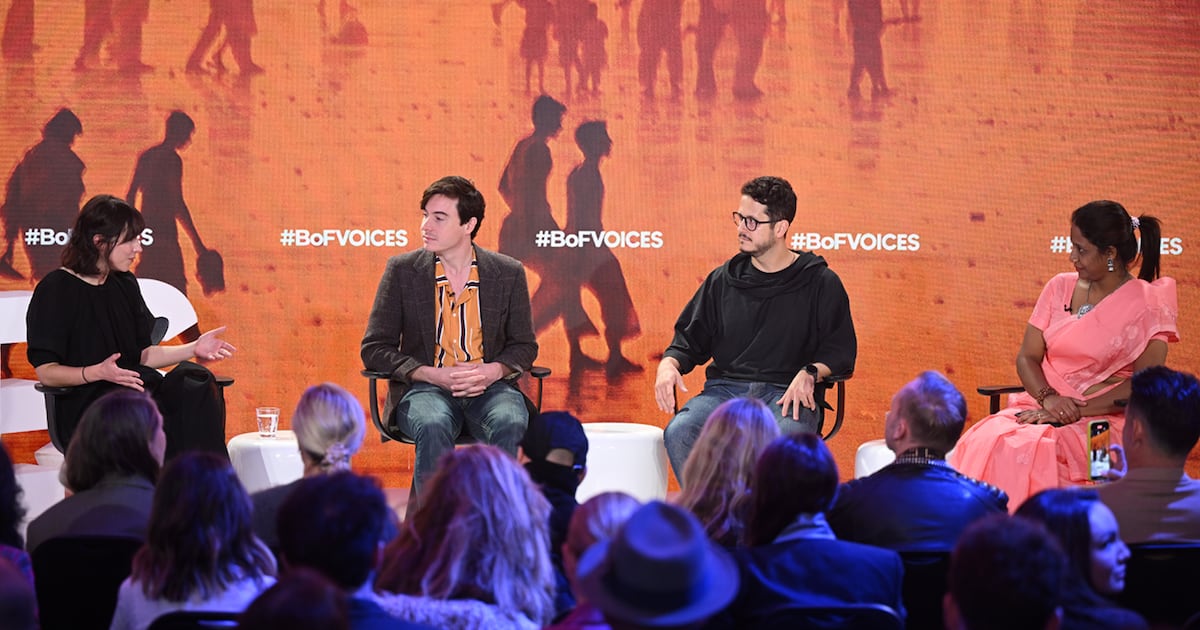The author has shared a Podcast.You will need to accept and consent to the use of cookies and similar technologies by our third-party partners (including: YouTube, Instagram or Twitter), in order to view embedded content in this article and others you may visit in future.
Subscribe to the BoF Podcast here.
Background:
In recent years, extreme weather events have become commonplace catastrophes. And in an increasingly globalised fashion system, developing nations often bear the brunt of climate crises. For fashion and its complex global supply chains â which disproportionately depend on resources and labour from these countries near the equator â one of the most urgent issues is extreme heat.
In April, the Philippines, Thailand, Bangladesh and India all experienced merciless and sometimes deadly temperatures, which shuttered workplaces and schools. According to the US National Centers for Environmental Information, Africa, Asia, and Europe all logged their warmest Julys since global records began in 1850.
To discuss what this means for fashion, BoFâs chief sustainability correspondent Sarah Kent convened a panel of global experts:
Laurie Parsons of Royal Holloway at the University of London, who focuses on the garment industry and climate vulnerability, explains: âWhatâs at stake is the productivity of the industry, the health of the workers and as more and more of these stories come out, the reputation of an industry.â
From Brazil, Beto Bina, the founder and CEO of supply chain consultancy FarFarm says: âThinking as an ecosystem, you can be philanthropic, you can bring in public policies. Itâs a job for innovation, for marketing, for sustainability. If you bring these teams together and develop an innovative project to start this new supply chain that could be amazing for everyone.â
From Sri Lanka, Abiramy Sivalogananthan, country coordinator at Asia Floor Wage Alliance, who adds: âThe freedom of association should be ensured. Workers should be able to talk to be part of the union, to fight for their rights with the factoryâs management.â
The author has shared a YouTube video.You will need to accept and consent to the use of cookies and similar technologies by our third-party partners (including: YouTube, Instagram or Twitter), in order to view embedded content in this article and others you may visit in future.
Key Insights:
- Workers in garment factories face a range of challenges that often go unaddressed, particularly in the Global South. Sivalogananthan highlights the critical need for collective bargaining to give workers a voice in addressing these issues. âThey should be able to talk to whom they need to talk. They need to talk with the unions who should be part of it. And then as a collective, they should be able to talk to the supplier and of course able to talk to the fashion brands.â
- While many fashion brands are proud of their sustainability initiatives, these efforts overwhelmingly focus on reducing emissions, neglecting the immediate impacts of climate change on workers. Parsons points out this glaring gap, stating, âalmost every brand focuses on decarbonisation, but there is an infinitesimally small amount of sustainability policies that actually focus on the populations affected by climate change.â
- Bina further emphasises the interconnectedness of fashion brands and the broader environmental and social systems they rely on. âIf you buy cotton, you are part of the agriculture industry,â she says. âWe need to start to recognise this is part of the business and the brand.â Instead of viewing climate impacts as externalities, brands must integrate systemic accountability into their operations to ensure long-term viability and ethical production, she added.

